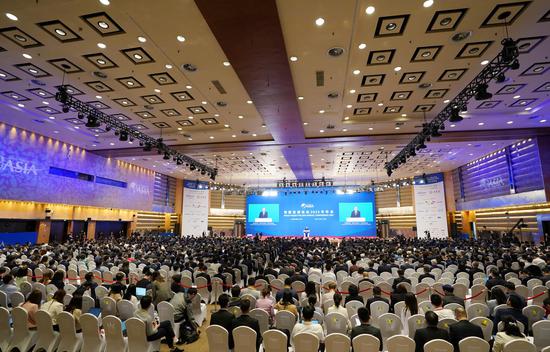
Lujiazui, the financial center in Shanghai, forms a perfect backdrop to the Bund area. (Wang Gang/For China Daily)
Shanghai remained the country's most populous city last year, with a permanent population of 24.76 million despite a net decrease of nearly 135,400 people, according to the Shanghai Statistics Bureau.
It saw a decrease of 257,300 permanent residents who hail from outside the city, the largest such drop in recent years, according to the bureau.
However, Shanghai registered a slight increase in its permanent population in terms of household registrations, up by more than 120,000, thanks largely to its ability to attract skilled workers.
More notably, life expectancy and the average length of education in Shanghai are on par with those in more developed nations.
Life expectancy last year was 83.18. In comparison, the figures for Norway and Sweden were 83.2 and 83, respectively. Also, Shanghai permanent residents on average have been schooled for 11.8 years, higher than in France and Ireland and nearly as high as in Singapore.
Statistics also showed a declining growth rate and an uptick in its aging rate.
Shanghai's permanent population has registered a negative natural growth rate for the past three years, dropping to minus 0.16 percent last year. Meanwhile, people age 60 or older accounted for 25 percent of permanent residents, up by 1 percentage point year-on-year.
A steady influx of migrants has kept the population over 24 million since 2013.
Lu Ming, an expert in urbanization from Shanghai Jiao Tong University, said that the consumer service sector in big cities like Shanghai attracts large numbers of migrant workers.
"Jobs like housekeepers, ride-hailing drivers and food delivery workers, which are part of the gig economy, do not have high requirements for education and cannot easily be automated," he said.
Lu estimates that up to 75 percent of China's population will live in cities by 2030, compared with 64 percent currently.
"Even if the labor force starts to decline, urbanization should still ensure that the supply of labor in the manufacturing and service industries continues to expand," Lu said. "The population influx into large cities will promote a more efficient use of labor resources, leading to sustained economic growth."


















































 京公网安备 11010202009201号
京公网安备 11010202009201号